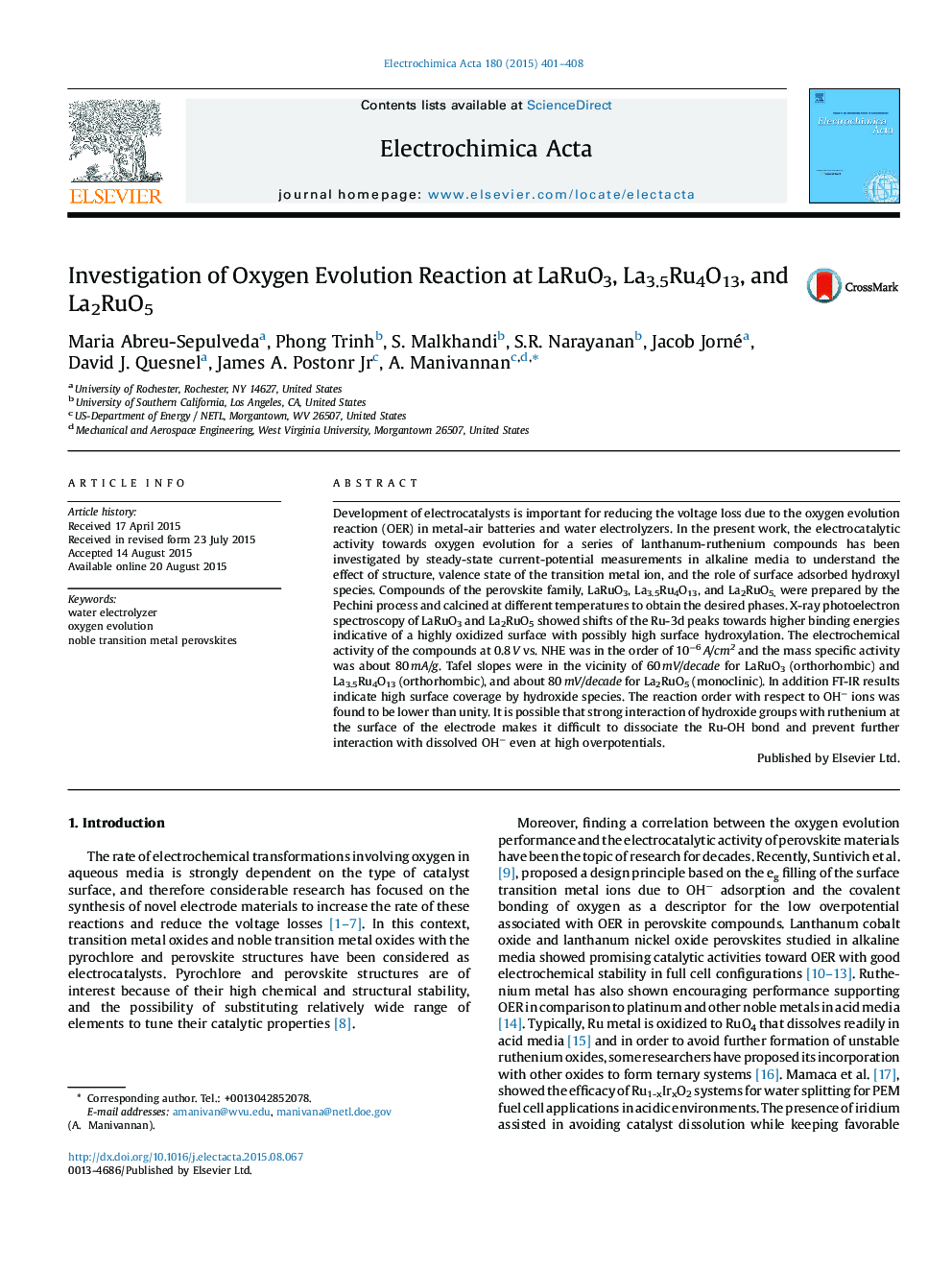| Article ID | Journal | Published Year | Pages | File Type |
|---|---|---|---|---|
| 6610336 | Electrochimica Acta | 2015 | 8 Pages |
Abstract
Development of electrocatalysts is important for reducing the voltage loss due to the oxygen evolution reaction (OER) in metal-air batteries and water electrolyzers. In the present work, the electrocatalytic activity towards oxygen evolution for a series of lanthanum-ruthenium compounds has been investigated by steady-state current-potential measurements in alkaline media to understand the effect of structure, valence state of the transition metal ion, and the role of surface adsorbed hydroxyl species. Compounds of the perovskite family, LaRuO3, La3.5Ru4O13, and La2RuO5, were prepared by the Pechini process and calcined at different temperatures to obtain the desired phases. X-ray photoelectron spectroscopy of LaRuO3 and La2RuO5 showed shifts of the Ru-3d peaks towards higher binding energies indicative of a highly oxidized surface with possibly high surface hydroxylation. The electrochemical activity of the compounds at 0.8Â V vs. NHE was in the order of 10â6Â A/cm2 and the mass specific activity was about 80Â mA/g. Tafel slopes were in the vicinity of 60Â mV/decade for LaRuO3 (orthorhombic) and La3.5Ru4O13 (orthorhombic), and about 80Â mV/decade for La2RuO5 (monoclinic). In addition FT-IR results indicate high surface coverage by hydroxide species. The reaction order with respect to OHâ ions was found to be lower than unity. It is possible that strong interaction of hydroxide groups with ruthenium at the surface of the electrode makes it difficult to dissociate the Ru-OH bond and prevent further interaction with dissolved OHâ even at high overpotentials.
Keywords
Related Topics
Physical Sciences and Engineering
Chemical Engineering
Chemical Engineering (General)
Authors
Maria Abreu-Sepulveda, Phong Trinh, S. Malkhandi, S.R. Narayanan, Jacob Jorné, David J. Quesnel, James A. Jr, A. Manivannan,
